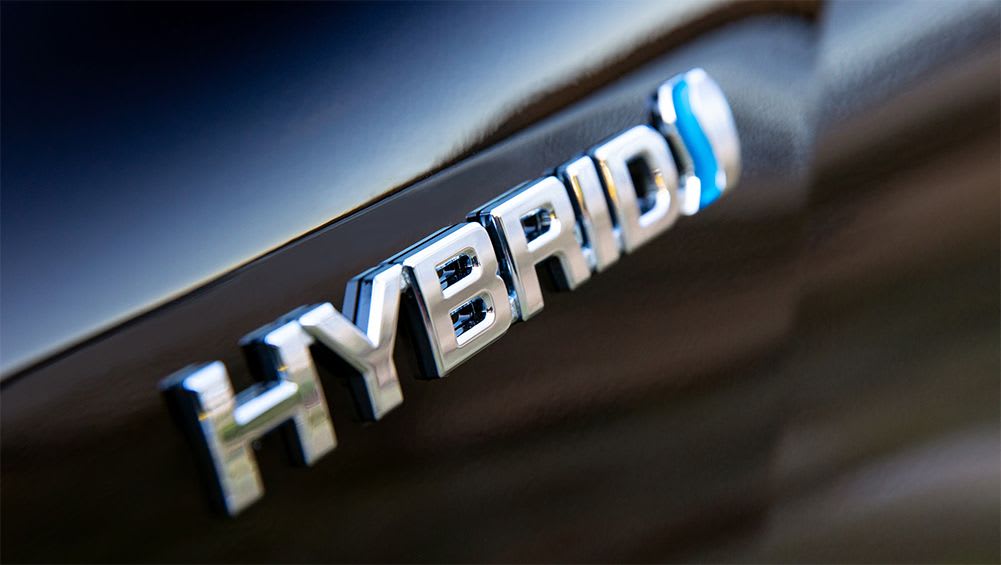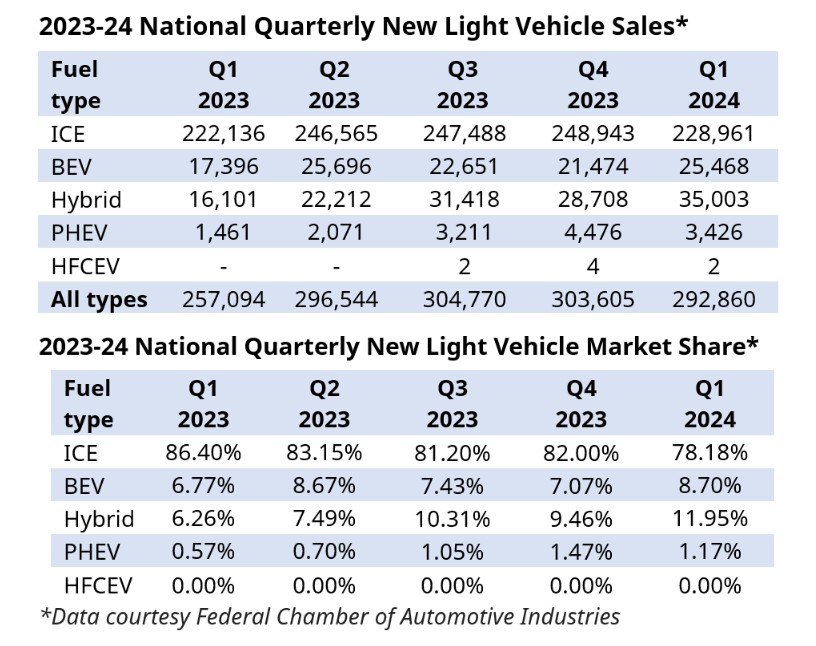
The quarterly update of the AAA's EV Index shows Australians are continuing to shift towards electric vehicles and that internal combustion engines' (ICE) market share continues to decline.
Battery electric vehicle (BEV) and hybrid new vehicle sales continue to grow. Both segments recorded record market share in the three months to 31 March.
The AAA EV Index online data dashboard, produced by Australia's peak motoring body, analyses all new light vehicle sales across the country.
In national new light vehicle sales from Q4 2023 to Q1 2024:
- ICE sales fell by 8.03% and ICE market share dropped to 78.18%, going below 80% for the first time
- BEV sales continued to grow strongly, reaching 8.70% market share, but they were outsold by hybrids, which recorded record sales volume and market share (11.95%)
- Plug-in hybrid vehicles (PHEVs) and hydrogen fuel cell electric vehicles (HFCEVs) still have very small market shares. Collectively, ICE vehicles, battery electric vehicles (BEVs) and hybrids accounted for 98.7% of the quarter's total new light vehicle sales.
From Q4 to Q1, national light vehicle sales declined by 3.54%, but year-on-year (31 March 2023 to 31 March 2024) total sales rose 13.91%.

Sales figures over the five quarters confirm a clear trend of growth for BEVs and hybrids and a gradually shrinking market share for ICEs. But there have also been significant quarterly fluctuations in the past 15 months.
Over that period, BEV market share rose from 6.77% to 8.70% and total BEV sales rose from 17,396 to 25,468. The strongest quarters for total BEV sales and markets share were Q2 2023 and Q1 2024.
In the first half of 2023 BEVs outsold hybrids, but since then hybrids have outsold BEVs in three consecutive quarters, accounting for 11.95% of all light vehicle sales (rising from 9.46% in Q4 2023 and up from 6.26% in Q1 last year). Hybrid sales volume rose by 117% in the 12 months from the end of 31 March 2023 to 31 March 2024.
ICE vehicle sales have risen year-on-year (up from 222,136 in Q1 2023 to 228,961 in Q1 2024), but over that period the ICE share of a growing market has declined by more than 8% (down from 86.40% to 78.18%). Over the last five quarters, ICE market share peaked in Q1 2023 (86.40%) and sales volume peaked in Q4 2023 (248,943).
Fuel types and vehicle types - Q1 2024
In the March quarter, ICE vehicles still dominated the small car, small SUV and large SUV market segments with hybrids a distant second.
More than 99% of utes and vans sold were ICE vehicles, as were more than 95% of people movers sold.
But only 18.61% of medium-sized cars sold were pure ICE.
BEVs accounted for 52.56% of medium car sales and 39.48% of large car sales. BEVs also performed relatively strongly in the medium SUV segment (14.77% of sales).
Hybrids sold most strongly among medium cars (28.44%), medium SUVs (21.61%), small cars (17.05%) and small SUVs (11.91%).
EV Index
The AAA EV Index provides unbiased data on Australia's vehicle technology transition. It collates information from multiple national, state and territory sources, including information provided by the Federal Chamber of Automotive Industries, which is used with the FCAI's permission.
The Index is intended to enable consumers, businesses, and fleet managers to see the trends transforming the national vehicle market. Its online dashboard covers light vehicles of all fuel types - BEVs, PHEVs, conventional hybrids, HFCEV, and ICE.






